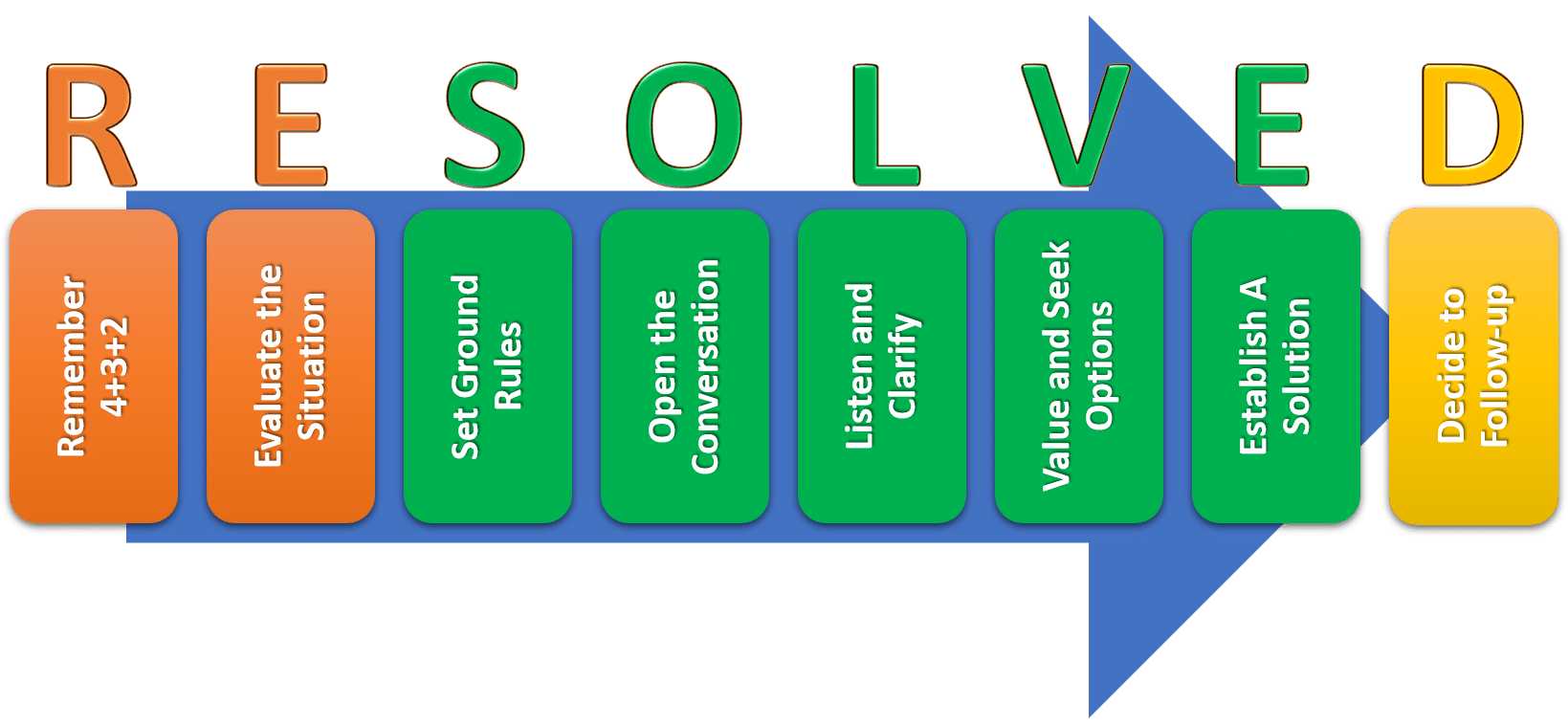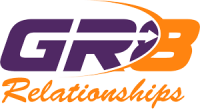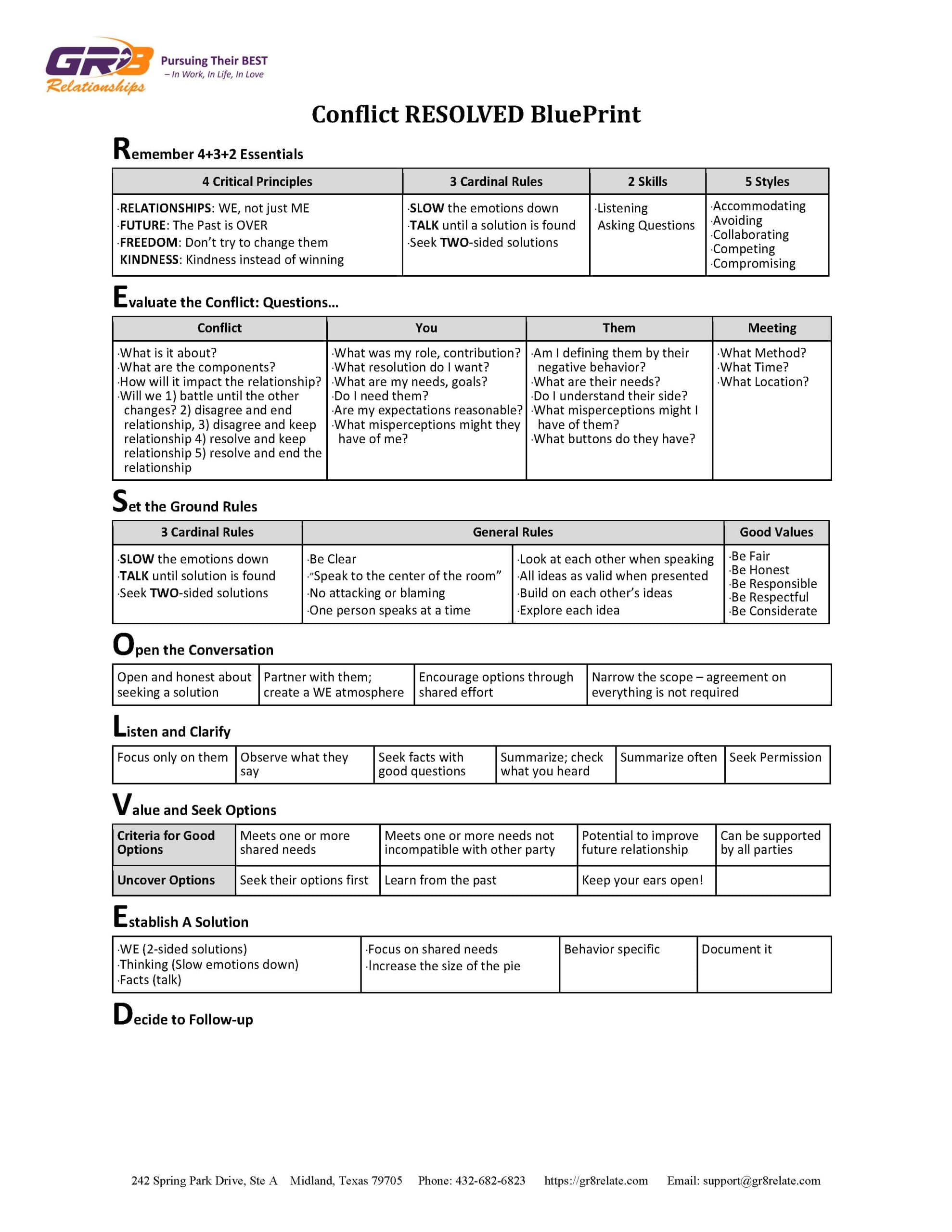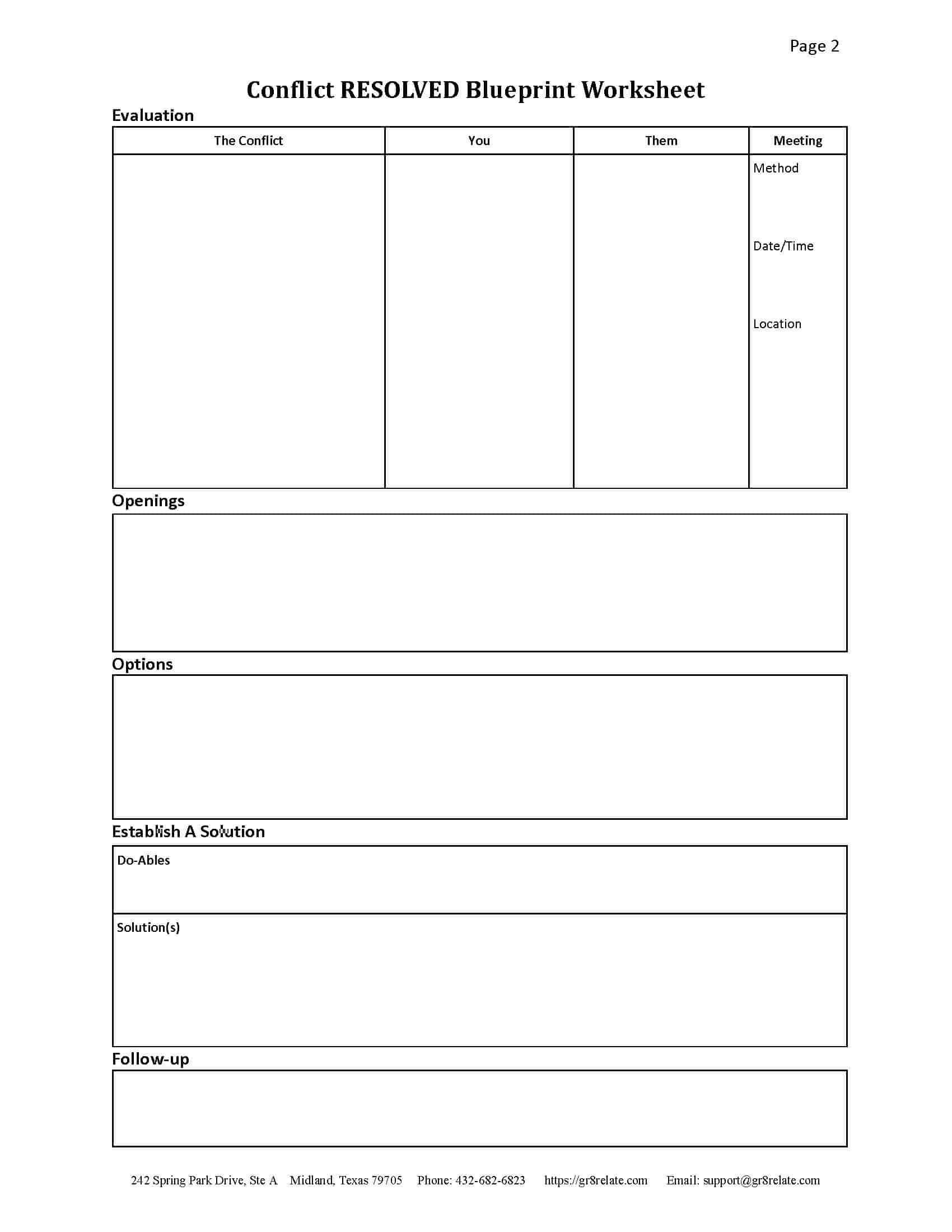Resolving an issue is the most crucial element when faced with conflict since disagreement is inevitable in human relationships. Conflict is common to everyone, whether it's a disagreement with a spouse, a clash with a coworker, or a dispute within a community. The problem is most people do not have effective strategies or tools for resolving conflicts or even know that it tends to follow a pattern we call the conflict cycle. Check out this short video about the conflict cycle.

But what if we told you that conflict isn't necessarily destructive? When approached correctly, conflict can be a catalyst for growth and improvement. When you change your view of conflict, that new thinking becomes a structure to utilize effective strategies and tools for conflict resolution.
The Misconception About Conflict
What do you think when you hear someone say "conflict"?
Most people often associate conflict with negative terms like "fight," "anger," or "strife." That perception makes conflict resolution seem like an impossible challenge. However, a better view of conflict is that it can be constructive and beneficial if approached with better thinking.
James 1:2-4 (ESV): "Count it all joy, my brothers, when you meet trials of various kinds, for you know that the testing of your faith produces steadfastness. And let steadfastness have its full effect, that you may be perfect and complete, lacking in nothing."
It Starts With Your Thinking
Before constructively resolving an issue, you must change your thinking to accept that conflict can be constructive. Thinking drives everything in your life - your emotions and actions. Even if you are exposed to a new thought, it can drive feelings and actions, but when you believe something and have faith in something, that is a more entrenched level of thought. Those may be your core values that are less susceptible to change. So, if you believe that conflict must be avoided, it will be challenging to commit to seeing this disagreement as positive. It is critical to understand conflict is an option for learning.
So, if you believe conflict is bad, it will be difficult to use any information and tools that provide a constructive path to resolution. Also, please remember that a negative mindset can perpetuate a conflict, while better thinking opens the door for resolution.
A Formula for Conflict Resolution - Remember 4+3+2
Our Conflict RESOLVED process has eight steps that spell "resolved." The first step is critical because it sets the foundation. You can remember it like a formula - 4+3+2, which stands for 4 Critical Principles, 3 Cardinal Rules, and 2 Essential Skills. These elements lay the foundation for the correct thinking for effective conflict resolution.
So, resolving an issue or conflict starts with remembering the basics - 4+3+2.

Four Critical Principles
Preserve RELATIONSHIPS– WE, not just ME
- Relationships are worth saving
- Relationships, NOT just results
- Relationship building and conflict resolution are connected
- Good relationships “leave a trail of resolved issues”
Look to the FUTURE; Learn from the Past – The Past is OVER
- The Past is OVER, so learn from it
- You can visit Pity City, but please do not move there!
- The Present is here—show personal responsibility, own your part of the conflict
- The future is coming—find ways to make it better
FREEDOM - Have No Agenda to change them
- Freedom does not try to get the other person to fit your agenda or fulfill your expectations
- Freedom helps prevent flashing your ME
- Freedom encourages thinking first; think about your values and discount your emotions
- Freedom aids in gathering facts, not trusting assumptions
KINDNESS Instead of Winning – Kindness Helps Lower Barriers and Defenses
- Kindness considers the other person – winning considers you
- Kindness is generous – winning is mostly stingy
Three Cardinal Rules
SLOW the emotions down
- Think—Act—Feel
- Time out if it gets heated
TALK until a solution is found
- Persevere; stick with it
- Solutions are possible
Seek TWO-sided solutions
- Not about ME winning
- Not about a power play
Two Essential Skills
- LISTENING—Observe the conversation
- ASKING QUESTIONS—Learn how they think about the issue
Effective communication requires those two essential skills.
Resolving an issue requires observational listening. You "see" what the other person is saying, which gives you a more significant opportunity to understand their point of view genuinely. Seeing what they say is the way your brain works. You take the words they say and turn them into pictures or a video in your mind.
Open and honest communication is vital in resolving an issue. Resolution is much more likely when both parties express their thoughts and feelings without fear of judgment.
Proverbs 15:1 (ESV) "A soft answer turns away wrath, but a harsh word stirs up anger."
Conflict Resolution Worksheets
The Role of Worksheets
Worksheets can be handy tools for resolving an issue because they help you slow down to become more objective. Using these two forms is another way to take multiple deep breaths or count to more than ten.
The first form is a blueprint to follow. Click here to download The Conflict RESOLVED Blueprint. It contains the most critical information of the eight steps of our Conflict RESOLVED process. There are questions to answer and statements to consider and apply to your conflict.
The second form is The Conflict RESOLVED Worksheet, which captures your answers to the questions and statements on the blueprint. Again, when you objectively approach your answers, especially about yourself and your role in the conflict, you have a greater chance to identify the conflict's root cause, biases, and potential solutions.
How to Use Worksheets Effectively
To make the most out of conflict resolution worksheets, both parties should fill their worksheets out separately before getting together. This ensures that each person takes time to think critically about the issue.
Here are additional worksheets to use.
- Meeting Guidelines
- Six Guidelines When Confessing (with Meeting Guidelines)
- 4A Apologies
Conclusion
Conflict is not something to be feared but rather an opportunity for growth and improvement. Adopting the right mindset and employing effective strategies can turn a potentially harmful situation into a positive one. Remember, the key to resolving an issue lies in understanding, open communication, and a willingness to change.
By incorporating these elements into your approach, you'll be well on your way to mastering conflict resolution. So the next time you find yourself in a conflict, don't shy away—embrace it as an opportunity for growth.
Videos you may like
Podcasts you may like


